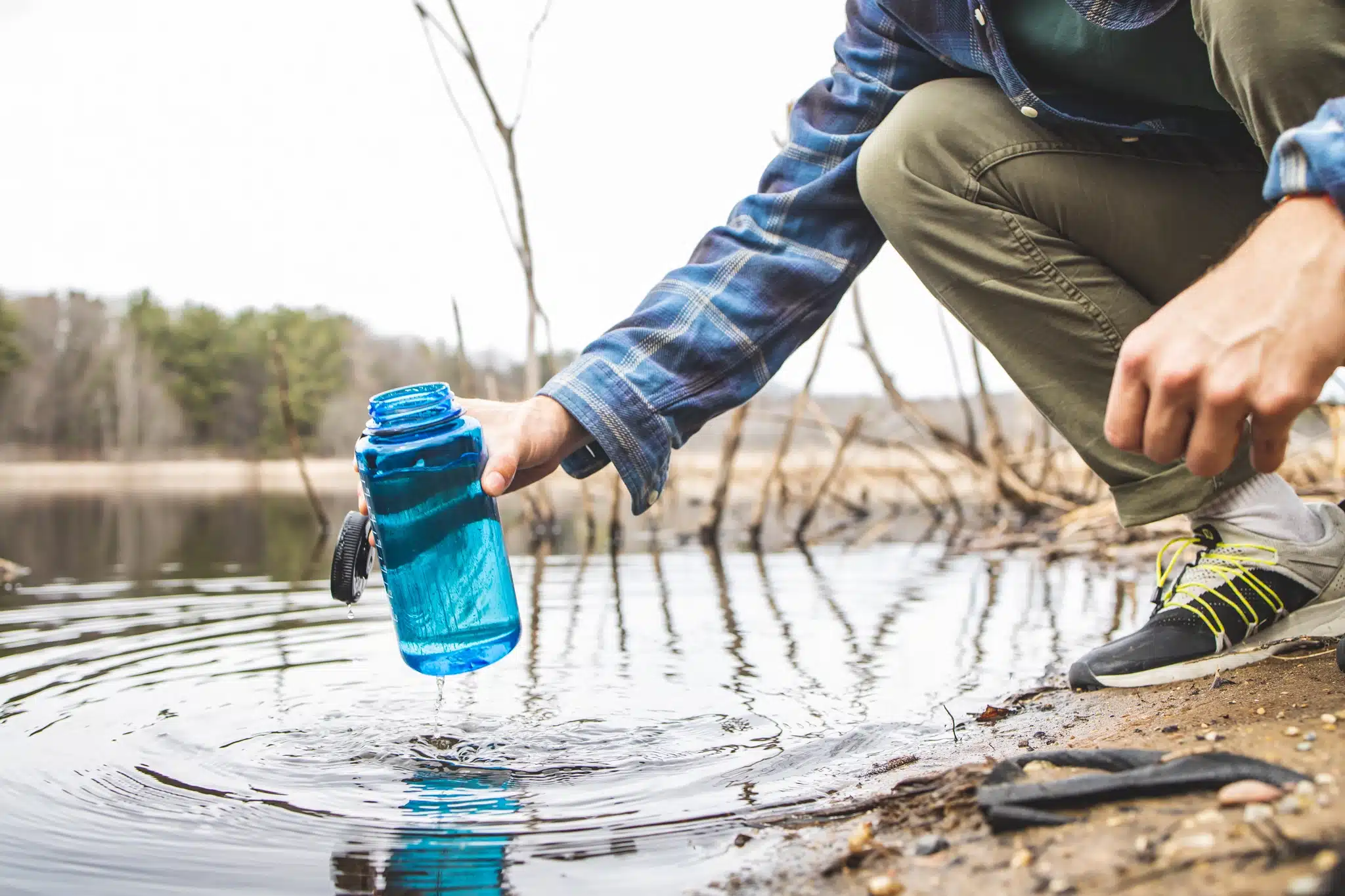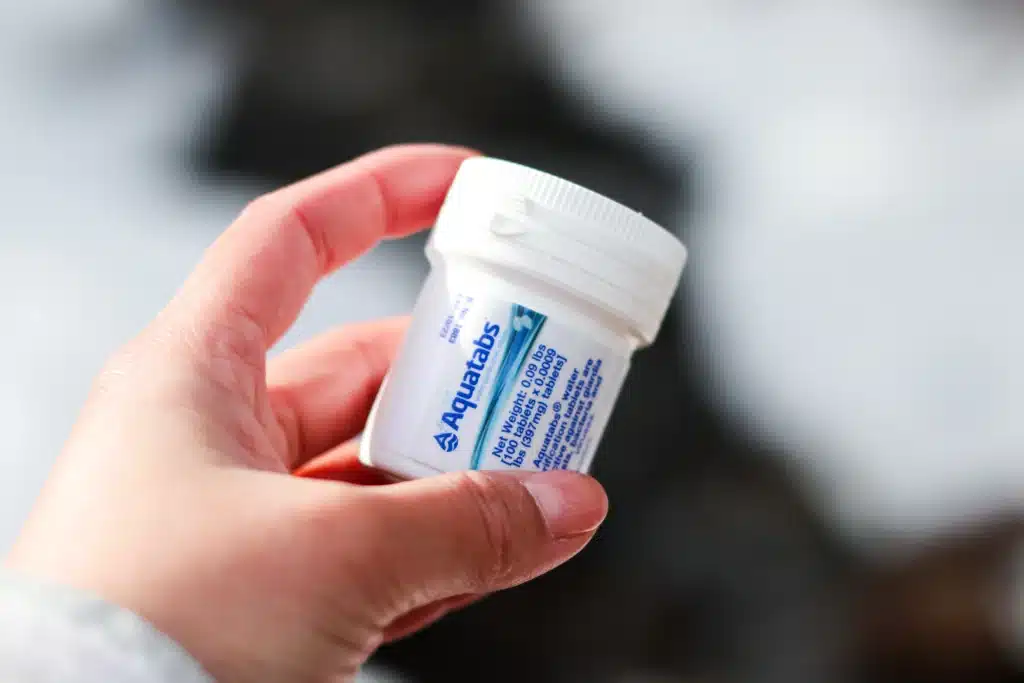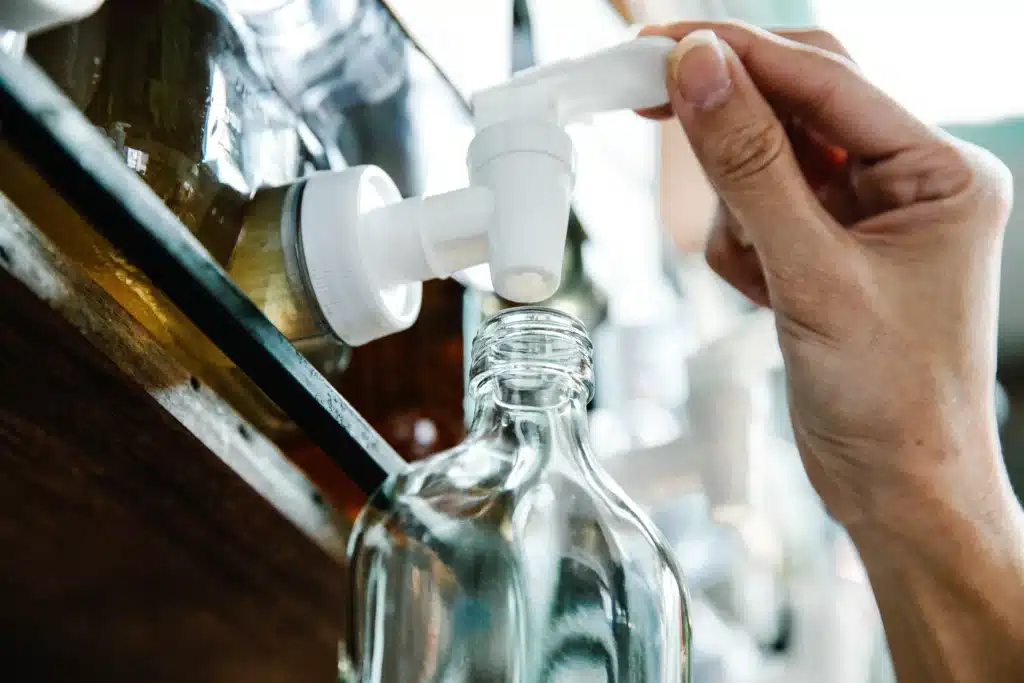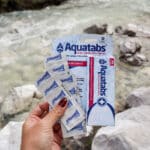Have questions? Call 1-833-BC-WORLD (1-833-229-6753)

Everyone deserves access to clean drinking water, but not all water is safe to drink from the source. There are two common ways to purify water, ensuring its safety to consumers, but which way is better? This guide will break down which method is more effective, convenient and cleaner.
Why Does Water Need to be Purified?
Some water requires purification because of the toxins or harmful chemicals that it might contain. Some common bacteria or chemicals that are in water pre-purification include:
- Arsenic
- Copper
- Lead
- Nitrate
- Radon
Also other pathogens like E.coli and Giardia. According to the Center for Disease Control (CDC), water from sources like lakes or rivers typically require more purification than underground water. This is because it can contain sediment from the ground, and additional germs and toxins. Because of this need, point of use water purification systems can be extremely helpful to have on hand. Water that needs purifying doesn’t necessarily come from a “dirty” or unclean source, it can be in households as well, from rusting pipes or flooding. Aquatabs, water purification tablets, are an at home solution that can help get rid of bacteria.
What are Aquatabs?
Aquatabs are fast-acting, portable water purification tablets that make water clean to drink by disinfecting it. Each tablet releases a mild chlorine-based compound called hypochlorous acid that eliminates harmful bacteria and contaminants in just 30 minutes.
Because they’re user-friendly, Aquatabs are a convenient way to purify water at home or on the go. Each tablet can treat up to four gallons of water, and because they’re certified by the World Health Organization, they are a globally trusted purification system. In fact, they are used by many humanitarian and disaster relief organizations to purify an estimated 7.9 billion gallons of water each year.

The Bleach Question: Is Your “Clean” Water Safe?
As an alternative to water purification tablets, you might consider using bleach to make water safe to drink. While this can be an effective method, it has several drawbacks that make it less reliable and convenient.
One major issue is that bleach can’t eliminate all contaminants. The Washington State Department of Health states that it is not effective against some chemicals found in surface water, meaning it can’t fully purify the water. Additionally, the process is less convenient than using purification tablets. Bleach needs to sit in water for over an hour before it’s safe to drink, and cloudy water must be pre-filtered.
Another concern is the variability and potential harm of using bleach. Household bleach concentrations can vary widely, and scented or industrial types should not be used. This makes it difficult to know if you’re using the right kind for purification. While small amounts can be used to purify water, bleach is a powerful and potentially dangerous chemical that should always be used with extreme caution.
Aquatabs vs Bleach: Major Differences
- Security
Aquatabs are already measured out, cutting out any issues with dosage. Bleach at home can be helpful, but making sure that it’s the correct amount and kind of bleach can lead to confusion and even harm.
- Effectiveness
Aquatabs are made so that they target a large amount of bacteria that inhabits water, whereas bleach, while doing something similar, has less precision. As previously mentioned, water purification tablets are pre-measured, making it more precise when it comes to having cleaner water. Bleach would be measured by the person using it, leaving more chance that water will not be fully clean. Bleach can also lose its effectiveness as time goes on, making it a less stable or reliable option for long term usage. Aquatabs can also keep a small amount of residual chlorine, making the water drinkable for longer.
- Convenience
Both of these are at home options for water purification, so what makes one easier to use than the other? For one, Aquatabs only take 30 minutes to eliminate bacteria in water, compared to bleach, which has to sit for an hour before drinking. Bleach is also not measured out beforehand, adding a lot of guess work to the process. It’s also significantly easier to bring a few tabs with you to hike a mountain, than it is a bottle of bleach.
- Cost
A bottle of bleach does cost less than the prepackaged Aquatabs do. However, Aquatabs do come with convenience and longevity. Aquatabs stay effective for longer than a bottle of bleach does.

Which Method is Best For You?
At the end of the day, both Aquatabs and bleach can be used to purify water, but Aquatabs are the more clean and consistent option. They have pre-measured doses, convenient packaging and a longer shelf life. Why would you want to take chances on measuring out bleach that could potentially lead to harm, when you could use a simple water purification tablet? If you’re traveling, camping or putting together an emergency kit, Aquatabs are a much more simple and effective way to purify water quickly and securely. You can easily slip it into a back pack to take on the go, or store them in a cabinet, for easy at home use.
Make Your Choice: The Smarter Way to Purify Water
Water should never be something to compromise on. Aquatabs are a proven solution to clean drinking water that are globally recognized and supported. Bleach may be cheaper by unit, but why keep in the guess work and potential for harm? Aquatabs water purification tablets are a great way to help ensure everyone has access to clean drinking water!
-

Aquatabs vs Bleach: Which Water Purification Method is Better?
October 1, 2025 Uncategorized -

How Much is Enough? Meet the Aquatabs Dosage Calculator!
August 8, 2025 Health & Wellness -

Hiking and Hydration for Hounds: Hydration Tips and Pet-Friendly Purifiers
July 11, 2025 Outdoor Lifestyle -

How to Use aquatabs for water purification while hiking
May 7, 2025 Outdoor Lifestyle -

How do Aquatabs Work? The Science Behind Water Purification Tablets
April 18, 2025 Health & Wellness -

Aquatabs Celebrates Women’s History Month: Historic Female Adventurers
March 28, 2025 Social Impact & History







